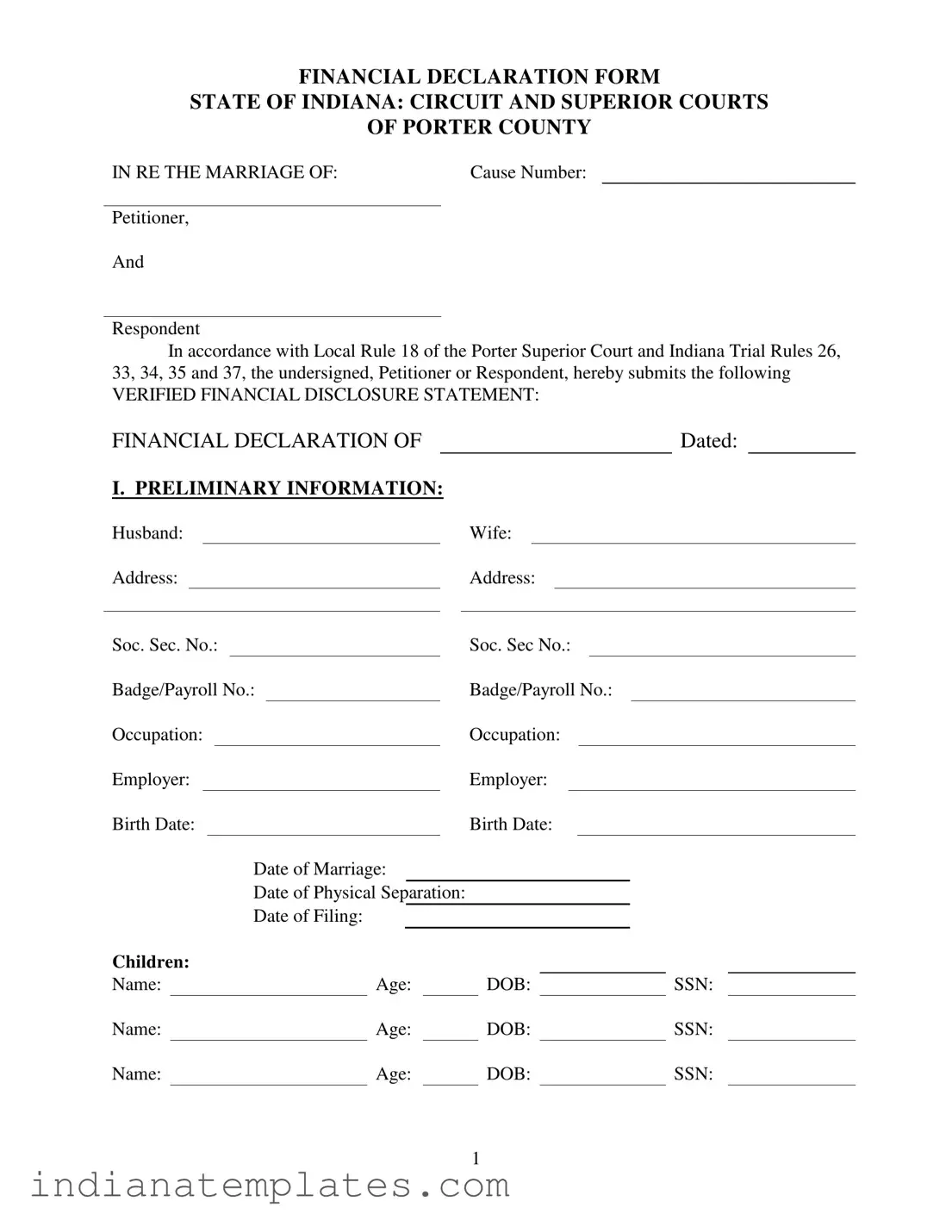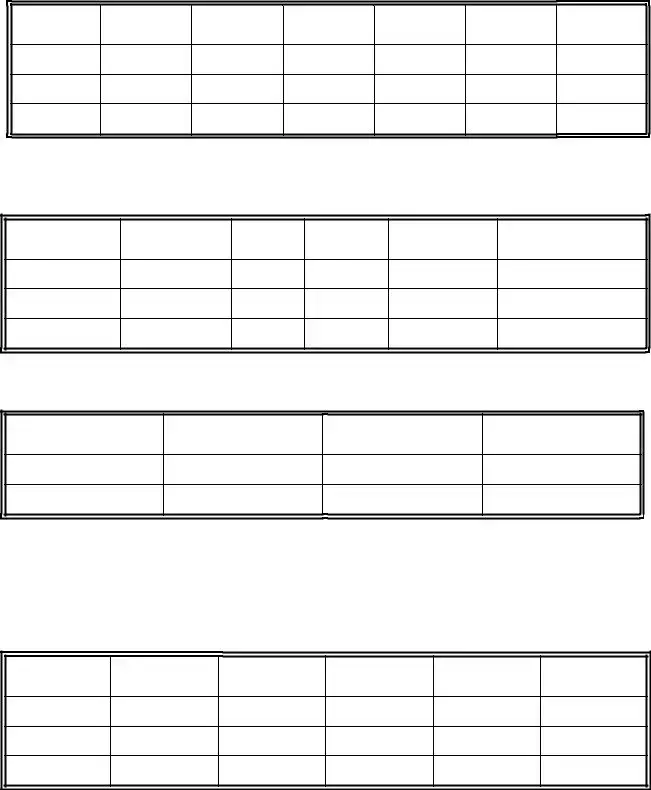What is the Indiana Financial Declaration form?
The Indiana Financial Declaration form is a document used in family law cases, particularly during divorce proceedings. It provides a comprehensive overview of an individual's financial situation, including income, expenses, assets, and liabilities. This form helps the court understand the financial circumstances of both parties involved, ensuring fair decisions regarding support and division of property.
Who needs to complete the Indiana Financial Declaration form?
Both parties in a divorce or legal separation are typically required to complete the Indiana Financial Declaration form. This includes the husband/father and the wife/mother. Each party must disclose their financial information to facilitate equitable decisions regarding child support, alimony, and asset distribution.
What information is required on the form?
The form requires detailed information about your income, including salaries, pensions, child support received, and other sources. Additionally, you must list your monthly expenses, such as taxes, housing costs, and medical expenses. You will also need to disclose your assets, including real estate, vehicles, and bank accounts, along with any debts associated with these assets.
How do I calculate my gross weekly income?
Your gross weekly income is the total amount you earn before any deductions. To calculate this, add together your salary, wages, commissions, and any other income sources. It’s important to attach your last three payroll stubs to provide proof of your earnings, as this helps establish a clear financial picture for the court.
What should I do if my financial situation changes after I submit the form?
If your financial circumstances change after submitting the Indiana Financial Declaration form, you have a duty to update the court. You should amend the form to reflect any new information prior to the trial. This ensures that the court has the most accurate and current information when making decisions.
Can I include my spouse's income on my Financial Declaration?
No, you should only include your own income and financial information on your Financial Declaration form. Each party must complete their own form independently. This separation helps the court assess each individual’s financial situation accurately.
What happens if I fail to complete the Financial Declaration form?
Failing to complete the Financial Declaration form can have serious consequences. The court may view this as a lack of cooperation or transparency, which could negatively impact your case. It’s essential to fill out the form accurately and submit it on time to avoid any potential penalties or unfavorable decisions.
Is there assistance available for filling out the form?
Yes, there are resources available to help you complete the Indiana Financial Declaration form. You can seek assistance from a family law attorney, legal aid organizations, or local court self-help centers. These resources can provide guidance on how to accurately report your financial information and ensure compliance with court requirements.
Where do I submit the Indiana Financial Declaration form?
You should submit the completed Indiana Financial Declaration form to the court where your divorce or legal separation case is filed. Make sure to keep copies of the form and any supporting documents for your records. Additionally, you may need to serve a copy of the form to the other party involved in the case.
What if I have questions about specific sections of the form?
If you have questions about specific sections of the Indiana Financial Declaration form, it’s advisable to consult with a legal professional. They can provide clarity on how to accurately complete each section based on your unique financial situation. Additionally, many court websites offer guides and FAQs that can help clarify common concerns.










